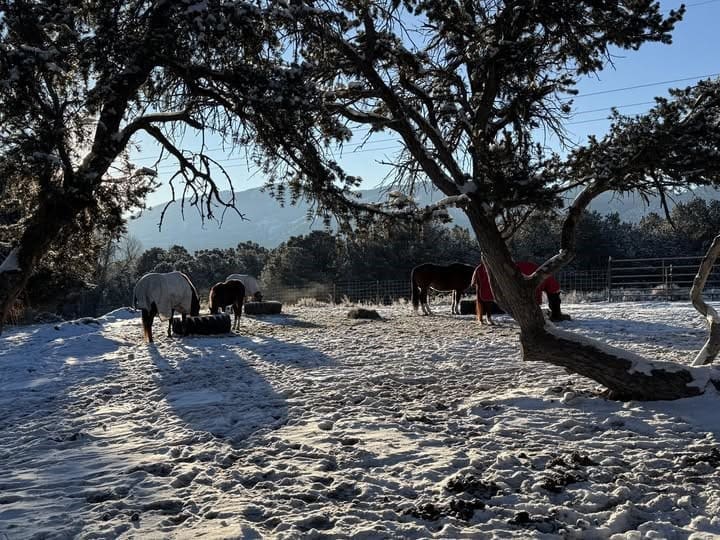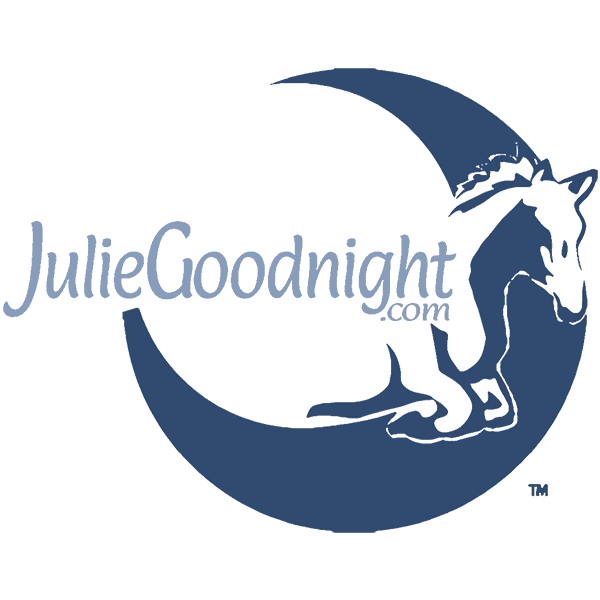FOR IMMEDIATE RELEASE
www.GettyEquineNutrition.com
July 30, 2015
The Secret? Keep It Simple!
By Juliet M. Getty, Ph.D.
We know they’re out there. Horses who are enjoying life. Horses who are brimming with health – strong muscles, shiny coats, hard hooves, good digestion, normal metabolism, strong immune function – just plain healthy! How does this happen? What is it about their care and feeding that gives them such wellbeing?
We’re always searching for answers. Our typical approach is to study sick horses. But that only helps us to understand disease. We look at fat horses to understand fat horses. We look at horses with pain, metabolic problems, and digestive ailments to understand those who are experiencing the same hardships. While such research is worthwhile, wouldn’t it also make sense to evaluate fit, hearty horses so we can strive to make our own horses be more like them? Shouldn’t we be looking at what healthy horses experience?
Here’s the basic “recipe” for a healthy horse:
Avoid feeding excess calories. Obesity is a real problem and it comes from piling on the calories, combined with lack of physical activity. Forage should be the dietary staple and it should flow steadily throughout the horse’s entire gastrointestinal tract. Pounds and pounds of concentrated feeds can shorten a horse’s life.
Prevent winter weight gain by imitating nature. In a natural setting, feed would be sparse during the winter months. The horse would graze continually, but on fewer calories, so he wouldn’t become overweight. Then, when the spring grasses come, he enjoys them without the risk of developing laminitis because his body has not been unnaturally put in a state of insulin resistance (through too much body fat). To imitate this cycle, the horse should be helped to stay trim by being fed all the quality, varied forages he wants, and only enough concentrates to meet his supplemental needs. Keep up with your horse’s exercise regimen throughout the winter—think of it as substituting for the way a horse in the wild will move over large expanses in search of winter food.
Keep stress to a minimum. The hormonal response to stress is capable of doing terrible things to a horse’s body – making it more likely to develop infections, allergies, and skin disorders, and to become insulin resistant. Stress produces free radicals that potentially damage every tissue in the body, including the brain, blood vessels, hooves, eyes, skin, and digestive tract. Stress also contributes to a horse’s poor attitude. Limiting stressors helps prevent ulcers, laminitis, and colic, and promotes an amiable, willing attitude. So a horse should be able to eat when he wants, and not be bound (stressed) by the owner’s schedule. Forage (preferably fresh grasses) should be available all throughout the day and night so the horse can self-regulate his intake of grasses according to his instincts, which include an innate need to graze, roam, socialize, and eat a variety of plants. He should be unencumbered by contraptions that inhibit his natural way of living. And he should have company. Companionship protects him against threats (real and perceived), keeping him calm, allowing his digestion to work properly, and permitting him to truly rest.
Be an educated owner. Learn the details about the equine digestive system and why forage must flow continually through the horse’s system.
Fill the nutritional gaps and build a strong immune system. Grass when dried for hay loses nutritional value, so supplement a hay diet by giving the proper vitamins and minerals as well as omega 3s. Feed a variety of protein sources to supply a large enough amino acid pool for the body to produce and repair tissues, keep blood proteins where they need to be, and naturally fight off disease.
Make movement a part of the horse’s daily life. Confinement is stressful and debilitating. The horse’s sense of safety depends in large measure on being able to move in response to fear. Furthermore, standing in one place wreaks havoc on his body. If stall housing is necessary, make sure the horse gets plenty of exercise every day – exercise keeps the digestive system healthy and without it, the horse can develop ulcers and colic; his hooves can become weak and thin; his joints deteriorate; and his overall natural healing ability is diminished. Movement also inhibits weight gain; exercise not only burns calories, but it makes the cells more receptive to insulin, allowing the body to burn fat.
Meet the horse’s evolving needs as he ages. Exercise maintains muscle and protects aging joints, so the wise owner encourages movement and feeds enough quality protein, vitamin C, and omega 3s to slow down the progression of arthritis. Care for your horse’s teeth and check his blood for proper kidney and liver function. Since saliva production diminishes with age, moisten your horse’s food so he can chew better, and feed at ground level to help prevent choking, a common problem with aged horses.
Variety is the key to balanced nutrition. Eating the same thing day in and day out, even if it is nutritious, can lead to nutritional imbalances. A pasture that is thick with one type of grass is not going to keep a horse healthy. To thrive, the horse needs different types of grasses, lots of weeds, bushes, berries, flowers, and trees; this is the ideal, to which all you would need to add is water and salt. Most of us do not have this amount of land to offer our horses, and must rely on hay. Choose a mixed grass hay, but realize that hay provides only basic forage for a healthy digestive tract; it is missing so many key nutrients that you must also feed a good vitamin/mineral supplement and provide a source of omega 3 fatty acids. You may also need to improve the protein quality by adding other protein sources.
Keep it simple
We are so busy micromanaging our horses’ lives and their diets that we have forgotten the basics: Fresh air, water, companionship, freedom to move, and fresh grasses and plants. Your horse will thank you. And you can have the satisfaction of knowing that you are giving your horse a lifetime of vibrant health.
Permission to reprint this article is granted, provided attribution is given to Juliet M. Getty, Ph.D. No editorial changes may be made without her permission. Dr. Getty appreciates being notified of any publication.
Juliet M. Getty, Ph.D. is an independent equine nutritionist with a wide U.S. and international following. Her research-based approach optimizes equine health by aligning physiology and instincts with correct feeding and nutrition practices.
Dr. Getty’s comprehensive resource book, Feed Your Horse Like a Horse, is available at www.GettyEquineNutrition.com — buy it there and have it inscribed by the author, or get it at Amazon (www.Amazon.com) or other online retail bookstores. The seven separate volumes in Dr. Getty’s topic-centered Spotlight on Equine Nutrition series are available with special package pricing at her website, and also at Amazon in print and Kindle versions. Dr. Getty’s books make ideal gifts.
Find a world of useful information for the horseperson at www.GettyEquineNutrition.com: Sign up for Dr. Getty’s informative, free e-newsletter, Forage for Thought; browse her library of reference articles; search her nutrition forum; and purchase recordings of her educational teleseminars. Reach Dr. Getty directly at gettyequinenutrition@gmail.com. She is available for private consultations and speaking engagements.


